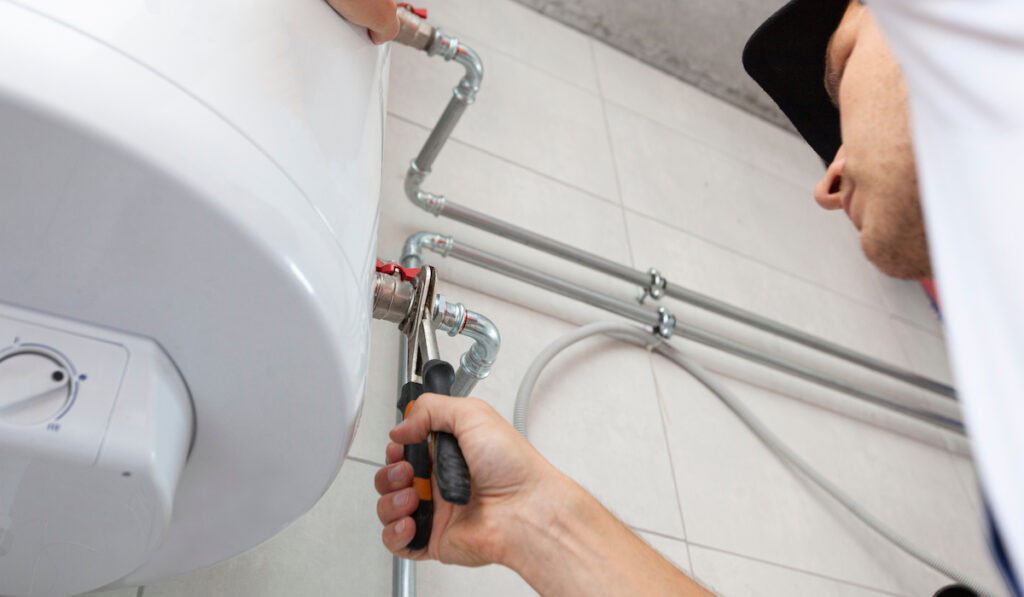Straightforward Ways to Maintain Your Home's Hot Water System Effectively
Straightforward Ways to Maintain Your Home's Hot Water System Effectively
Blog Article
Have you been on the lookout for resources about Tips on Maintaining a Water Heater?

Hot water is necessary for daily convenience, whether it's for a refreshing shower or washing dishes. To ensure your warm water system runs efficiently and lasts longer, routine upkeep is essential. This short article supplies sensible suggestions and insights on just how to keep your home's hot water system to prevent interruptions and pricey repairs.
Introduction
Maintaining your home's hot water system may appear overwhelming, but with a few basic actions, you can guarantee it runs efficiently for years to come. This guide covers everything from comprehending your warm water system to DIY maintenance ideas and recognizing when to hire specialist aid.
Significance of Preserving Your Warm Water System
Regular maintenance not only expands the life-span of your hot water system however additionally guarantees it operates efficiently. Ignoring upkeep can lead to decreased effectiveness, greater power costs, and even premature failure of the system.
Signs Your Hot Water System Requirements Upkeep
Understanding when your warm water system requires interest can stop significant problems. Watch out for indications such as irregular water temperature level, weird sounds from the heating system, or rustic water.
Comprehending Your Hot Water System
Before diving into maintenance jobs, it's handy to recognize the fundamental elements of your hot water system. Generally, this consists of the hot water heater itself, pipelines, anode rods, and temperature controls.
Monthly Upkeep Tasks
Routine monthly checks can aid capture small problems before they rise.
Purging the Hot Water Heater
Flushing your water heater gets rid of debris accumulation, improving efficiency and lengthening its life.
Monitoring and Replacing Anode Rods
Anode poles protect against rust inside the tank. Inspecting and changing them when worn out is crucial.
Evaluating and Changing Temperature Setups
Changing the temperature setups guarantees optimal efficiency and security.
DIY Tips for Upkeep
You can carry out numerous maintenance jobs on your own to keep your warm water system in top condition.
Looking for Leaks
Regularly check pipes and links for leaks, as these can lead to water damages and higher costs.
Checking Pressure Alleviation Valves
Testing the stress relief valve guarantees it works appropriately and stops excessive pressure accumulation.
Insulating Pipelines
Shielding hot water pipelines decreases warm loss and can save power.
When to Call a Professional
While do it yourself upkeep is helpful, some issues call for specialist competence.
Complex Problems Calling For Expert Aid
Examples consist of major leaks, electric problems, or if your hot water heater is consistently underperforming.
Routine Specialist Maintenance Perks
Professional maintenance can consist of comprehensive assessments, tune-ups, and making certain compliance with security criteria.
Conclusion
Routine upkeep of your home's hot water system is vital for effectiveness, long life, and cost financial savings. By adhering to these pointers and knowing when to look for specialist help, you can guarantee a trusted supply of warm water without unexpected interruptions.
How to Maintain an Instant Hot Water Heater
Before tinkering with your hot water heater, make sure that it’s not powered on. You also have to turn off the main circuit breaker and shut off the main gas line to prevent accidents. Also turn off the water valves connected to your unit to prevent water from flowing into and out of the appliance. 2. When you’re done, you have to detach the purge valves’ caps. These look like the letter “T†and are situated on either side of the water valves. Doing so will release any pressure that has accumulated inside the valves while at the same time avoid hot water from shooting out and burning your skin. 3. When the purge valves’ caps are removed, you have to connect your hosing lines to the valves. Your unit should have come with three hoses but if it didn’t, you can purchase these things from any hardware or home repair shops. You can also get them from retail stores that sell water heating systems. Read the user’s manual and follow it to complete this task properly. When the hosing lines are connected, open the purge port’s valves. 4. You should never use harsh chemical cleaners or solutions when cleaning your unit. Make use of white vinegar instead. It should be undiluted and you’ll probably use about 2 gallons. 5. Now flush your water heater. This task should probably take about 40 minutes. We can’t give you specific directions for this because the procedure is carried out depending on the type, model and brand of your heater. With that being said, refer to the user’s manual. 6. When you’re done draining the unit, you have to turn off the purge port valves again. Remove the hosing lines that you earlier installed on each of the water valves. Put the valve caps (purge port) back in their respective places and be very careful so as not to damage the rubber discs that are found inside these caps. 7. Now that everything’s back in place, check your user’s manual again to find out how to reactivate your water heating system. 8. Once it is working, turn one of your hot water faucets on just to let air pass through the heater’s water supply pipes. Leave the tap on until water flows smoothly out of it. https://www.orrplumbing.com/blog/2014/september/how-to-maintain-an-instant-hot-water-heater/

I came across that page on What Kind of Maintenance Do Water Heaters Need? when doing a lookup on the search engines. Do you know about somebody who is serious about the niche? Do not hesitate to promote it. Thanks so much for going through it.
Call Today Report this page